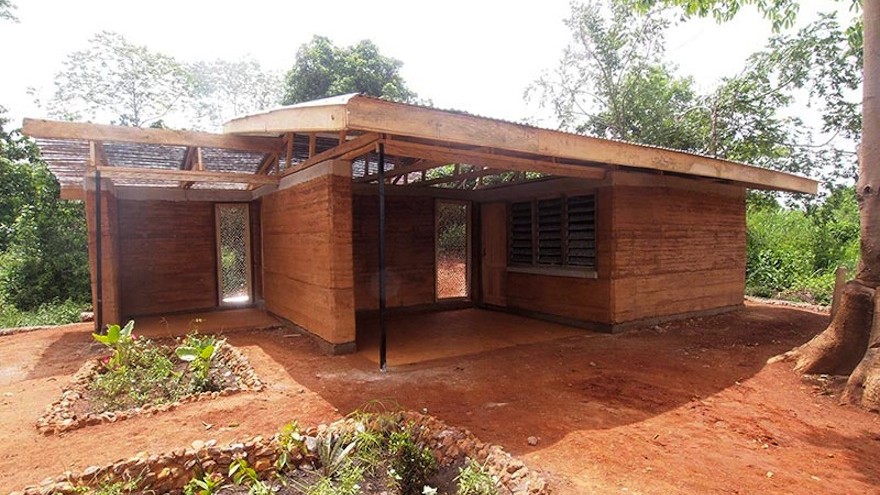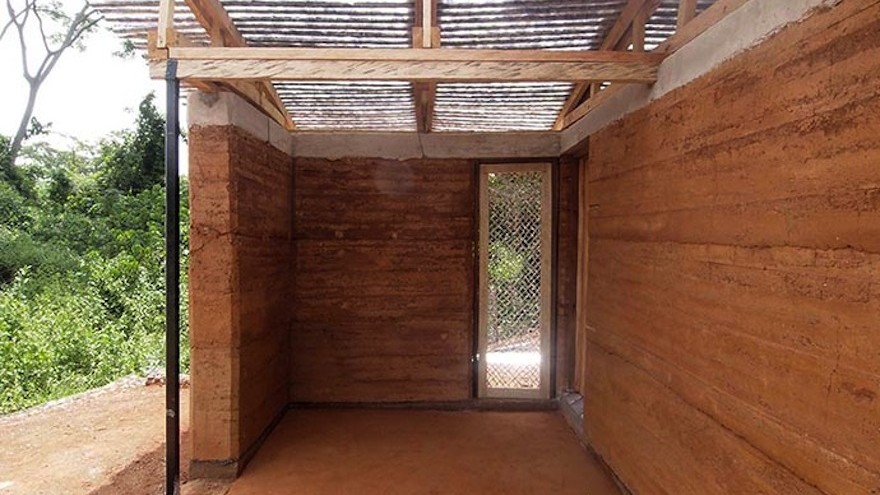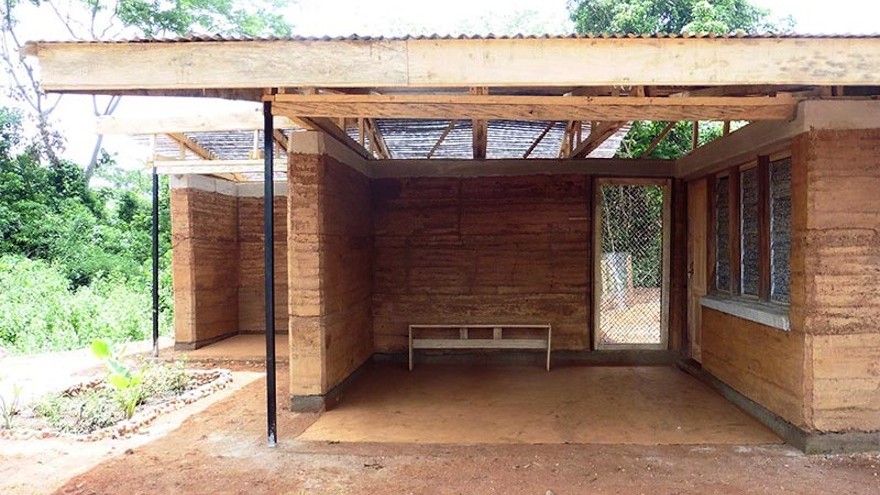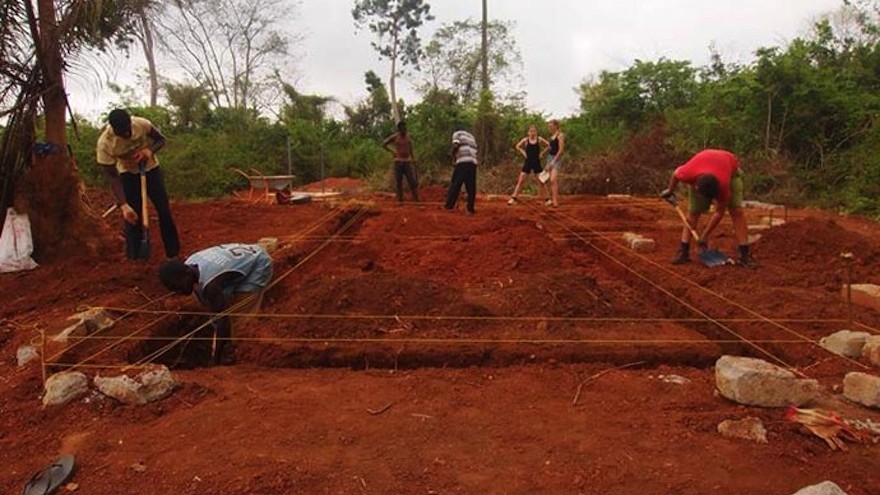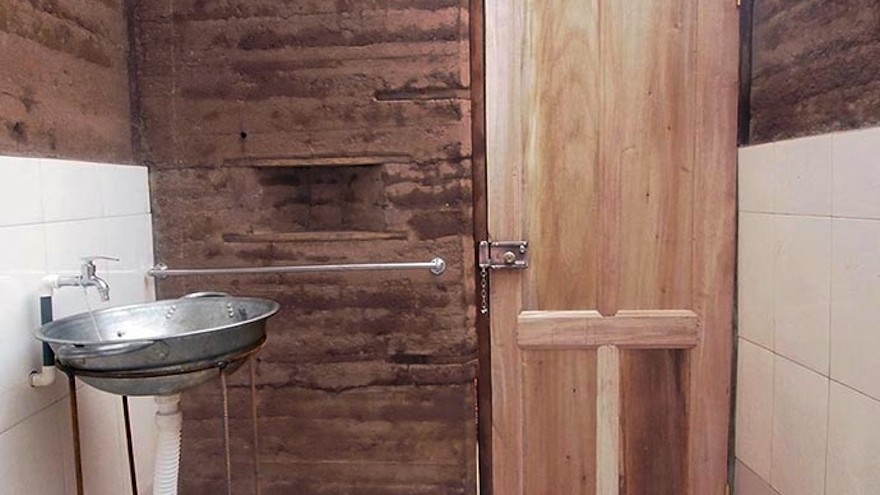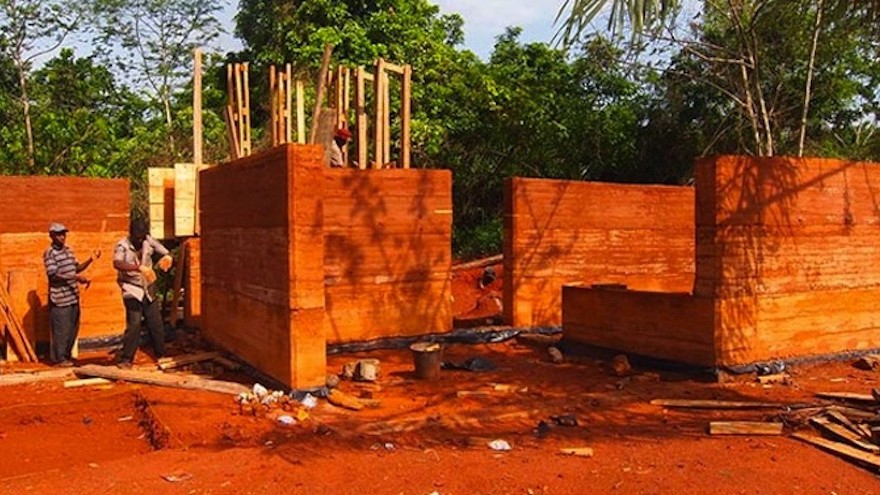From the Series
Anna Webster, a master’s degree student in the school of architecture at London Metropolitan University in the United Kingdom, has designed the Nkabom House in Ghana using plastic water sachets and mud. The consumption of drinking water packaged in plastic sachets has soared in West Africa over the last decade due to population growth in West Africa, which has outstripped local efforts to expand potable water services.
Seeing a gap in the market, the private sector has upped the sale of packaged drinking water to secure the household water supply. The problem with sachets of drinking water is that they litter the streets of Ghana and block drains causing a spread of waterborne diseases and creating a habitat for mosquitoes.
Webster’s designed the Nkabom House in response to a competition, Reinventing the African Mud Hut Together, launched by Ghanaian non-profit organisation, the Nka Foundation.
Webster travelled to Ghana earlier this year to build a prototype of the Nkabom house. The competition stipulated that mud had to be a key component of the design, so Webster used a traditional African method where the walls are created by compressing mud. It also stipulated that the mud house be built together with members of the community.
31 school children wove the plastic sachets into window louvres and mesh grills, which could be used inside the windows and used to make translucent panels that form part of the roof. A dozen more kids from the village helped by collecting and washing water sachets and stones from the village. The women in the village prepared waterproofing material made from the starch of the edible cassava plant.
“The local workers, volunteers and myself named the building Nkabom House,” says Webster. “The ‘Nka’ prefix represents the foundation and Nkabom means unity in Twi and representing the house as a consequence of unifying different materials and cultures in the spirit of collaborative building."
The Nkabom house utilised local resources, labour and techniques capabilities. Other studios, such as Senegalese architecture firm Atelier Koé' with their Eban Aya house and Studio [D] Tale with their kiosks for informal traders in Harare, have also engaged with African vernacular architecture, which has previously been largely overlooked by the design community. American architect Jon Sojkowski is gathering an online archive of images and information that celebrate African vernacular architecture.

